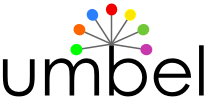 A Seminal Release by SD and Ontotext; Links to Wikipedia and PROTON
A Seminal Release by SD and Ontotext; Links to Wikipedia and PROTON
Structured Dynamics and Ontotext are pleased to announce — after four years of iterative refinement — the release of version 1.00 of UMBEL (Upper Mapping and Binding Exchange Layer). This version is the first production-grade release of the system. UMBEL’s current implementation is the result of much practical experience.
UMBEL is primarily a reference ontology, which contains 28,000 concepts (classes and relationships) derived from the Cyc knowledge base. The reference concepts of UMBEL are mapped to Wikipedia, DBpedia ontology classes, GeoNames and PROTON.
UMBEL is designed to facilitate the organization, linkage and presentation of heterogeneous datasets and information. It is meant to lower the time, effort and complexity of developing, maintaining and using ontologies, and aligning them to other content.
This release 1.00 builds on the prior five major changes in UMBEL v. 0.80 announced last November. It is open source, provided under the Creative Commons Attribution 3.0 license.
Profile of the Release
In broad terms, here is what is included in the new version 1.00:
- A core structure of 27,917 reference concepts (RCs)
- The clustering of those concepts into 33 mostly disjoint SuperTypes (STs)
- Direct RC mapping to 444 PROTON classes
- Direct RC mapping to 257 DBpedia ontology classes
- An incomplete mapping to 671 GeoNames features
- Direct mapping of 16,884 RCs to Wikipedia (categories and pages)
- The linking of 2,130,021 unique Wikipedia pages via 3,935,148 predicate relations; all are characterized by one or more STs
-
- 876,125 are assigned a specific
rdf:type
- 876,125 are assigned a specific
- The UMBEL RefConcepts have been re-organized, with most local, geolocational entities moved to a supplementary module. 577 prior (version 0.80) UMBEL RCs and a further 3204 new RCs have been added to this geolocational module. This module is not being released for the current version because testing is incomplete (watch for a pending version 1.0x)
- Some vocabulary changes, including some new and some dropped predicates (see next), and
- Added an Annex H that describes the version 1.00 changes and methods.
Vocabulary Summary
UMBEL’s basic vocabulary can also be used for constructing specific domain ontologies that can easily interoperate with other systems. This release sees a number of changes in the UMBEL vocabulary:
- A new
correspondsTopredicate has been added for nearly or approximatesameAsmappings (symmetric, transitive, reflexive) - A controlled vocabulary of qualifiers was developed for the
hasMappingpredicate - 31 new
relatesToXXXpredicates have been added to relate external entities or concepts to UMBEL SuperTypes - Some disjointedness assertions between SuperTypes were added or changed.
The UMBEL Vocabulary defines three classes:
The UMBEL Vocabulary defines these properties:
correspondsToisAboutisRelatedTorelatesToXXX(31 variants related to SuperTypes)isLikehasMappinghasCharacteristicisCharacteristicOf.
The UMBEL vocabulary also has a significant reliance on SKOS, among other external vocabularies.
Access and More Information
Here are links to various downloads, specifications, communities and assistance.
Specifications and Documentation
All documentation from the prior v 0.80 has been updated, and some new documentation has been added:
- UMBEL Specifications (and Annexes A – H)
- UMBEL Vocabulary
- UMBEL RefConcepts.
Major updates were made to the specifications and Annex G; Annex H is new. Minor changes were also made to Annexes A and B. All remaining Annexes only had minor header changes. All spec documents with minor or major changes were also versioned, with the earlier archives now date stamped.
Files and Downloads
All UMBEL files are listed on the Downloads and SVN page on the UMBEL Web site. The reference concept and mapping files may also be obtained from http://code.google.com/p/umbel/source/browse/#svn/trunk.
Additional Information
To learn more about UMBEL or to participate, here are some additional links:
Acknowledgements
These latest improvements to UMBEL and its mappings have been undertaken by Structured Dynamics and Ontotext. Support has also been provided by the European Union research project RENDER, which aims to develop diversity-aware methods in the ways Web information is selected, ranked, aggregated, presented and used.
Next Steps
This release continues the path to establish a gold standard between UMBEL and Wikipedia to guide other ontological, semantic Web and disambiguation needs. For example, the number of UMBEL reference concepts was expanded by some 36% from 20,512 to 27,917 in order to provide a more balanced superstructure for organizing Wikipedia content. And across all mappings, 60% of all UMBEL reference concepts (or 16,884) are now linked directly to Wikipedia via the new umbel:correspondsTo property. A later post will describe the design and importance of this gold standard in greater detail.
Next releases will expand this linkage and coverage, and bring in other important reference structures such as GeoNames and others. This version of UMBEL will also be incorporated into the next version of FactForge. We will also be re-invigorating the Web vocabulary access and Web services, and adding tagging services based on UMBEL.
We invite other players with an interest in reusable and broadly applicable vocabularies and reference concepts to join with us in these efforts.





